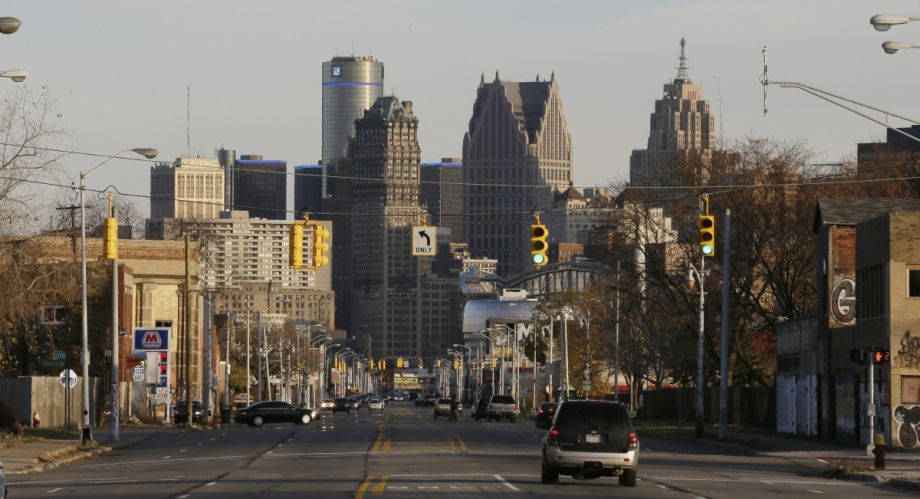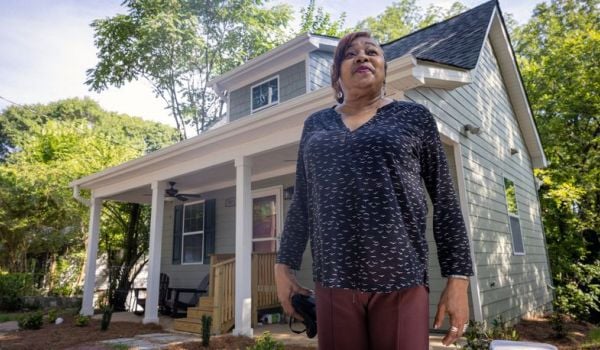Until 2012, Detroit was one of the only major American cities without a regional transportation authority. Lacking any kind of umbrella organization, city and suburban agencies already divided in the manner of many U.S. transportation systems — by geographic boundaries representing divisions in economic status, class and race — were forced to compete for federal funds, a situation that further undermined regional unity and made for long, transfer-dependent bus rides.
Transit advocates greeted the creation of the Regional Transportation Authority of Southeast Michigan (RTA) with tentative support three years ago; after four decades and 23 failed tries, a regional transportation network finally looked possible. Now, with the October announcement of a new funding split and several continuous routes between Detroit and its suburbs, that possibility looks more tangible than ever.
But the work isn’t done. As research from the University of Detroit Mercy and the Mineta National Transit Research Consortium has shown, old patterns die hard in historically segregated metros. Particularly in Atlanta, the presence of a regional umbrella hasn’t always been enough to bridge urban-suburban divides.
The main regional players in Southeast Michigan are the Detroit Department of Transportation (DDOT) and Suburban Mobility Authority for Regional Transportation (SMART). As their names suggest, DDOT operates city routes while SMART runs in Macomb, Oakland and Wayne Counties.
Until 2013, federal funds allocated to the two agencies factored in total ridership, and DDOT’s majority (about 115,000 daily riders according to 2011 numbers) gave it an edge over SMART, which has an average of about 36,000 daily riders. The funds were split 65-35 until the regional planning agency opted to allocate them according to population and vehicle equipment needs, a switch that gave SMART just over half the total sum.
The new split will be an even 50-50, a division that RTA spokesperson Travis Gonyou says takes both agencies’ metrics into account. It was finalized at an RTA board meeting on October 22nd, when the governing body also decided to expand SMART service in the city, likely along Woodward and Gratiot avenues.
“There’s some flexibility there,” Gonyou says, adding that both routes were proposed because they have “high ridership and cross county lines from the suburbs into the city.”
Those lines are currently a major pain point according to Megan Owens, executive director of advocacy group Transportation Riders United.
“Up until 2011, SMART would travel all the way from the suburbs into the city on several major corridors,” she says.
Those routes were reduced due to budget cuts in 2012. Now riders have to transfer to a city bus unless they’re riding during the peak commute hours of 6-9 a.m. and 3-6 p.m.
Adding that “there are very few details yet,” Owens expresses hope that the new ruling is a step forward.
But while it may be a landmark move for Metro Detroit, it doesn’t automatically signal clear skies ahead. The Detroit Regional Transit Study, published in 2014, compared the metro to four “peer regions”: Atlanta, Cleveland, St. Louis and Denver. And while regional transit umbrellas exist in all four, Atlanta, particularly, has struggled to shake its historic divisions.
Citing T-SPLOST, the road-and-rail initiative that failed spectacularly in 2012, researchers examined how the metro’s urban-suburban divides — and the racial and economic borders they stand for — crippled what could have been a powerful funding boost. Atlanta is home to the Metropolitan Atlanta Rapid Transit Authority, an imperfect comparison because its jurisdiction doesn’t cover the entire metro area, but a step above Detroit’s pre-RTA lack of any regional body. Even so, the report details how the NAACP saw suburban commuters too heavily represented in the plan and advocated against it alongside the Sierra Club and the Tea Party.
Distilling that experience for Detroit, researchers point to the need for strong, metro-wide advocacy networks to speak in the interest of a regional system. The RTA is legally barred from advocating for funds, and researchers saw potential roadblocks in Detroit’s historic divisions.
“Recent surveys (University of Detroit Mercy Transportation Center 2013) have indicated that the majority of respondents value transit in general, but do not have a high regard for the existing transit systems in [Southeast Michigan], nor a high degree of confidence in the current transit provides in the region,” it states. “Therefore, the advancement of transit will be especially susceptible to divisive forces whose priorities and politics are focused locally, not regionally.”
Still, Leo Hanifin, a Detroit Mercy retired dean and the lead researcher for the project, sees the RTA’s creation as an indication that new, metro-focused working relationships may be on the rise.
The Detroit area, he says, “has shown greater sense of regionalism” in recent years. “I’m encouraged by the initiative that created the RTA,” he says.
The Works is made possible with the support of the Surdna Foundation.

Rachel Dovey is an award-winning freelance writer and former USC Annenberg fellow living at the northern tip of California’s Bay Area. She writes about infrastructure, water and climate change and has been published by Bust, Wired, Paste, SF Weekly, the East Bay Express and the North Bay Bohemian
Follow Rachel .(JavaScript must be enabled to view this email address)








_600_350_80_s_c1.JPEG)








